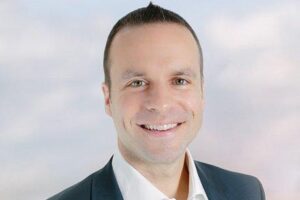How does regenerative medicine fit into your treatment philosophy?
My treatment philosophy centers around restoring function and quality of life through the least invasive, most biologically intelligent methods available. I believe in targeting the root cause of a patient’s condition rather than simply masking symptoms. This often means leveraging the body’s own healing capabilities—where regenerative medicine plays a critical role.
In managing spine conditions, especially degenerative disc disease, herniations, or facet-mediated pain, regenerative therapies such as Platelet-Rich Plasma (PRP), bone marrow aspirate concentrate (BMAC), and the Discseel® procedure allow us to promote true healing at a cellular level. These approaches often provide a powerful alternative to more invasive surgeries, with fewer risks and faster recovery times. We combine these with advanced imaging, physical medicine, and neuromodulation when appropriate to craft personalized, multimodal treatment plans that are both effective and sustainable.

Matthias Wiederholz, MD
Performance Pain and Sports Medicine
What led you to incorporate MLS® Laser Therapy into your advanced approach to spine care?
We incorporated MLS® Laser Therapy after reviewing the growing body of clinical evidence supporting its efficacy in reducing inflammation, improving circulation, and promoting tissue repair at the cellular level. The non-invasive, pain-free nature of the treatment made it an ideal addition to our suite of advanced modalities.
In our spine care protocols, MLS® Laser Therapy plays a complementary role—particularly in the acute and subacute phases of healing. For patients undergoing regenerative procedures like PRP or the Discseel® procedure, we’ve found that MLS® Laser Therapy can significantly enhance outcomes by accelerating healing and reducing post-procedural inflammation and discomfort. It also serves as a stand-alone option for patients with conditions not yet appropriate for regenerative interventions or those seeking a non-invasive solution for chronic spine pain.
In your experience, what are the benefits of combining MLS® Laser Therapy with regenerative treatments?
Combining MLS® Laser Therapy with regenerative treatments has produced excellent results in terms of both symptom relief and functional improvement. The laser’s anti-inflammatory and biostimulatory properties enhance the regenerative cascade initiated by procedures like Discseel® or PRP injections. We often observe reduced swelling, faster resolution of post-procedure soreness, and in many cases, quicker return to activity.
A specific success story that stands out involves a middle-aged patient with chronic lumbar disc pain who underwent the Discseel® procedure. We implemented MLS® Laser Therapy in the early post-procedural phase, and not only did the patient report a significant reduction in stiffness and discomfort, but he was also able to return to light exercise within two weeks—faster than our typical protocol. His six-month follow-up showed both subjective and objective improvements in mobility and quality of life.
How has offering MLS® Laser Therapy impacted workflow, patient retention, or revenue?
MLS® Laser Therapy has had a positive impact across all these dimensions. Operationally, it’s straightforward to integrate into clinical workflow. The treatments are quick, requiring minimal provider time, and can be managed efficiently by well-trained staff. From a patient retention standpoint, it enhances continuity of care—offering a bridge between more invasive interventions and physical therapy or acting as a standalone modality.
Revenue-wise, MLS® Laser Therapy represents a valuable cash-based service with minimal overhead after the initial investment. We’ve also found that it draws in new patients seeking conservative treatment options, which opens the door to deeper, longer-term therapeutic relationships and often guides patients toward our broader regenerative offerings.
What advice would you give to spine specialists who are considering adding MLS® Laser Therapy to their practice?
I would encourage specialists to view MLS® Laser Therapy not as a replacement, but as a valuable adjunct that enhances what they’re already doing. Start by identifying patient populations that could benefit most—post-injection patients, individuals with chronic facet pain, or those with soft tissue inflammation—and build protocols around those scenarios.
Also, educate your team and patients thoroughly. The more patients understand the science behind photobiomodulation, the more likely they are to pursue treatment. In our experience, once patients begin to see and feel the results, their adherence and satisfaction follow naturally.
Finally, consider the broader picture. Incorporating MLS® Laser Therapy allows you to expand your toolbox of non-opioid, non-surgical solutions. In an era of value-based care and patient-centered medicine, it aligns well with both clinical excellence and practice growth.



